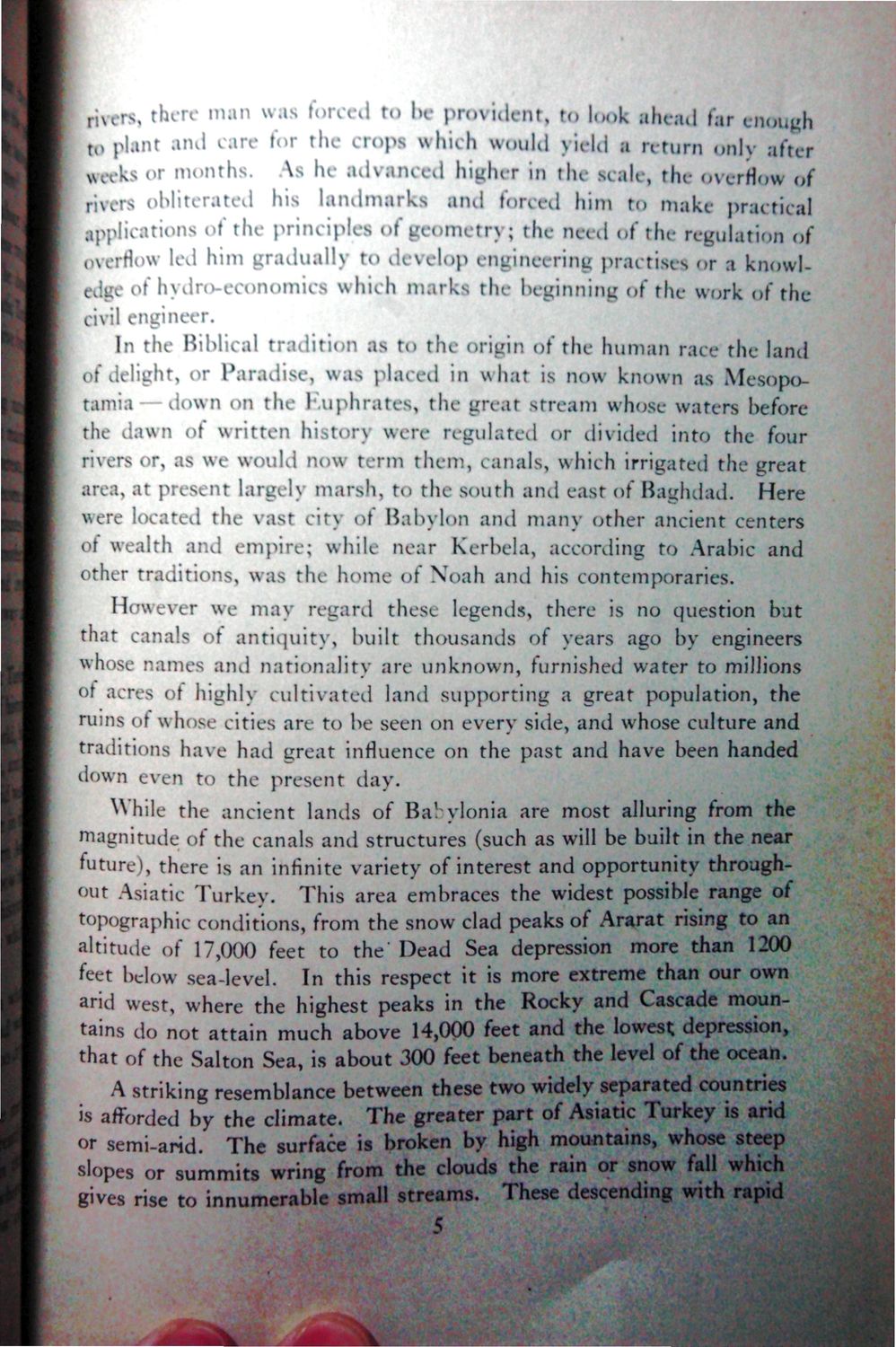| |
| |
Caption: War Publications - WWI Compilation 1923 - Article 23
This is a reduced-resolution page image for fast online browsing.

EXTRACTED TEXT FROM PAGE:
rivers, there man was forced to be provident, to look ahead far enough to plant and care for the crops which Would yield a return only after weeks or months. \s he advanced higher in tin scale, the overflow of rivers obliterated his landmarks and forced him to make practical application! of the principle < t L., , mctr\ ; tin \K'((\ of the regulation of > overflow led him gradually to develop engineering practises or a knowledge of hwlro-economics which marks the beginning of the work of the civil engineer. In the Biblical tradition as to the origin of the human race the land of delight, or Paradise, was placed ill what is now known as Mesopotamia— down on the 1 uphrates, the great stream whose waters before the dawn of written history were regulated or divided into the four rivers or, as we would now term them, canals, which irrigated the threat ar i, at present largely marsh, to the south and east of Baghdad. Here were located the vast cit\ of Babylon and many other ancient centers ot wealth and empm ; while near Kerbela, according to Arabic and other traditions, was the home of Noah and his contemporaries. However we may regard these legends, there is no question but that canals of antiquity, built thousands of years ago by engineers whose names and nationality are unknown, furnished water to millions ot acres ot highly cultivated land supporting a great population, the ruins ot whose cities are to be seen on every side, and whose culture and traditions have had great influence on the past and have been handed down even to the present day. While the ancient lands of Babylonia are most alluring from the magnitude of the canals and structures (such as will be built in the near future^, there is an infinite variety of interest and opportunity throughout Asiatic Turkev. This area embraces the widest possible range of topographic conditions, from the snow clad peaks of Ararat rising to an altitude of 17,000 feet to the Dead Sea depression more than 1200 feet below sea-level. In this respect it is more extreme than our own arid west, where the highest peaks in the Rocky and Cascade mountains do not attain much above 14,000 feet and the lowest, depression, that of the Salton Sea, is about 300 feet beneath the level of the ocean. A striking resemblance between these two widely separated countries is afforded by the climate. The greater part of Asiatic Turkey is arid or semi-arid. The surface is broken by high mountains, whose steep slopes or summits wring from the clouds the rain or snow fall which gives rise to innumerable small streams. These descending with rapid 5 • *
| |